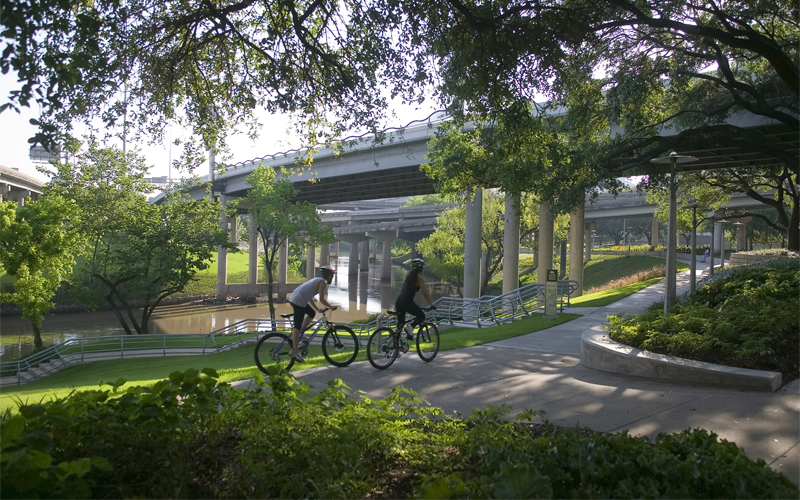What Are The Challenges Of Designing Sustainable Skyscrapers?

The move towards sustainable development is evident in every aspect of modern life. From fuel-efficient cars to eco-friendly homes, the need for sustainability is more pressing than ever. One area that is often overlooked, however, is the construction industry. Buildings and skyscrapers are responsible for a large percentage of carbon emissions - so how do we make these structures more eco-friendly?
The Rise of Sustainable Skyscrapers
Sustainable skyscrapers are one solution to the problem of carbon emissions. These towering structures are designed to minimize their impact on the environment, while still providing office or residential space for thousands. But what exactly does a sustainable skyscraper entail?
Green Roofs and Walls
One key feature of sustainable skyscrapers is the use of green roofs and walls. These features employ vegetation to absorb carbon dioxide and other pollutants from the air, while also providing insulation and reducing energy costs. Green roofs and walls can also be used as communal gardens or recreational areas.
Solar Power
Another important feature of sustainable skyscrapers is the use of solar panels. These panels convert sunlight into energy, providing a renewable power source for the building. Not only does this reduce the carbon footprint of the structure, but it can also save money on energy costs in the long run.
Efficient Water Management
Sustainable skyscrapers also employ efficient water management techniques. This includes the use of rainwater collection systems, which can be used for irrigation or non-potable water needs. Low-flow plumbing fixtures and water-efficient cooling systems can also help reduce water usage in these structures.
Building Automation Systems
Finally, sustainable skyscrapers employ building automation systems to reduce energy usage. These systems monitor and adjust lighting, heating, and cooling based on occupancy. They can also be used to identify areas of the building that are not being used, and adjust systems accordingly.
The Benefits of Sustainable Skyscrapers
The benefits of sustainable skyscrapers are numerous. Here are just a few:
Reduced Carbon Footprint
Sustainable skyscrapers have a much smaller carbon footprint than traditional buildings. The use of green roofs and walls, solar power, and efficient water management techniques all contribute to a more eco-friendly building.
Lower Energy Costs
By using renewable power sources like solar panels, sustainable skyscrapers can save money on energy costs in the long run. Building automation systems also help minimize energy usage.
Improved Air Quality
The use of green roofs and walls can help improve the air quality in and around the building. By absorbing pollutants like carbon dioxide, these features contribute to a healthier environment.
Increased Property Value
Studies have shown that sustainable buildings have higher property values than traditional buildings. This is due to their eco-friendly features, which are becoming increasingly important to home buyers and business owners alike.
FAQ
Q: Are sustainable skyscrapers more expensive to build?
A: Sustainable skyscrapers can be more expensive to build initially, but the cost savings in energy and maintenance costs over time can make up for the extra expense.
Q: Do sustainable skyscrapers require more maintenance?
A: Not necessarily. Many of the features of a sustainable skyscraper, such as green roofs and walls, are self-sustaining. Building automation systems can also help reduce maintenance costs.
Q: Are sustainable skyscrapers only for commercial use?
A: No, sustainable skyscrapers can be used for residential or mixed-use purposes as well. In fact, many sustainable skyscrapers include residential space as well as office space.
Q: Is it possible to retrofit existing skyscrapers to be more sustainable?
A: Yes, it is possible to retrofit existing skyscrapers to be more sustainable. This can involve adding features like green roofs and walls, or installing solar panels and building automation systems.
Q: Are there any downsides to sustainable skyscrapers?
A: One potential downside is the initial cost of construction. However, the benefits of sustainable skyscrapers - including reduced energy costs and higher property values - can make up for this expense in the long run.
Conclusion
Sustainable skyscrapers are a promising solution to the problem of carbon emissions in the construction industry. By using features like green roofs and walls, solar power, efficient water management, and building automation systems, these structures can minimize their impact on the environment while still providing necessary office or residential space. The benefits of sustainable skyscrapers include lower energy costs, improved air quality, and increased property values. While there are potential downsides to these structures - including higher initial construction costs - the long-term benefits make them a worthwhile investment for home buyers and business owners alike.




Post a Comment for "What Are The Challenges Of Designing Sustainable Skyscrapers?"